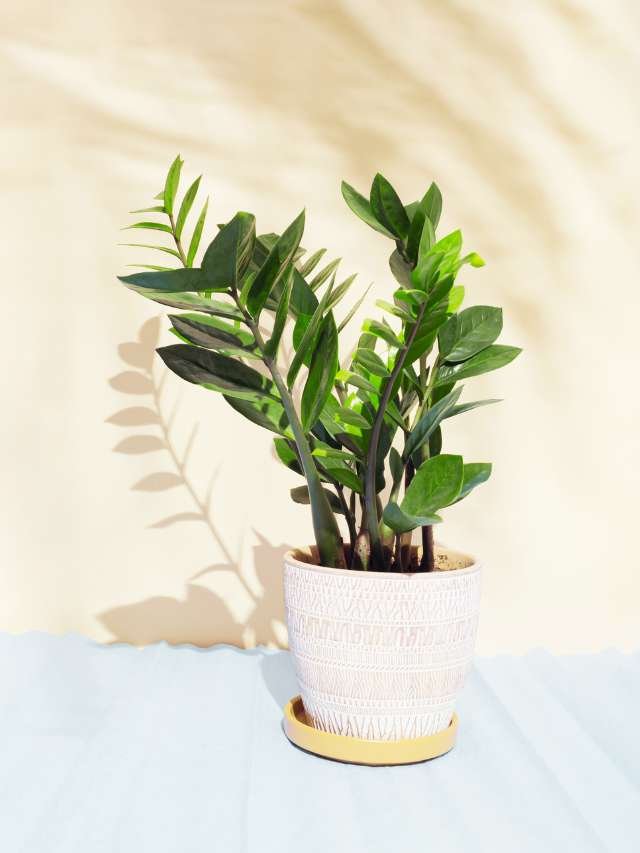The snake plant, also known as mother-in-law’s tongue or Sansevieria, is a popular houseplant known for its striking upright leaves and low-maintenance nature. Native to West Africa, this hardy plant has become a favorite among indoor gardeners worldwide.
However, even though snake plants are relatively easy to care for, there are still some essential tips you should follow to ensure their healthy growth and longevity.
In this article, we’ll explore seven crucial snake plant care tips that will help you keep your plant thriving.
1. Choose the Right Potting Mix

One of the most important factors in successful snake plant care is the potting mix you choose. Snake plants thrive in well-draining soil that doesn’t hold too much moisture.
A potting mix specifically formulated for cacti and succulents is an excellent choice, as it typically contains a blend of materials like perlite, sand, and bark, which promote excellent drainage.
According to Jessica Walliser, a horticulturist and the author of “Plant Partners,” “Snake plants are susceptible to root rot if the soil stays too wet for too long. A well-draining potting mix is essential to prevent this issue.”
2. Provide Adequate Lighting
Snake plants are known for their ability to tolerate low-light conditions, but they still need some level of bright, indirect light to thrive. If your snake plant is not receiving enough light, its leaves may become floppy or lose their vibrant green color.

“While snake plants can survive in low light, they will grow best and maintain their upright, rigid leaves when placed in a spot that receives bright, indirect light,” says Linda Ly, a houseplant expert and the founder of Garden Betty.
If you don’t have a bright spot in your home, consider supplementing with a grow light to provide the necessary light levels for your snake plant.
3. Water Sparingly
One of the most common mistakes people make when caring for snake plants is overwatering. These plants are highly drought-tolerant and can store water in their thick, succulent leaves.

As a general rule, you should only water your snake plant when the soil has completely dried out.
“A good rule of thumb is to water your snake plant only when the top few inches of soil are completely dry,” advises Amanda Luu, a florist. “It’s better to err on the side of underwatering than overwatering with these plants.”
During the winter months, when the plant’s growth slows down, you can reduce watering even further.
4. Provide Proper Humidity Levels
While snake plants can tolerate a wide range of humidity levels, they prefer moderate to low humidity environments. If the air in your home is too dry, you may notice the leaf tips turning brown or crispy.

“Snake plants are native to arid regions, so they prefer relatively low humidity levels,” explains Laura LeBoutillier, a gardening expert at Garden Answer. “If the air in your home is particularly dry, consider using a humidifier or placing your snake plant on a pebble tray filled with water.”
On the other hand, if the humidity levels in your home are too high, you may need to increase air circulation or move your snake plant to a drier spot to prevent fungal issues.
5. Fertilize Sparingly
Snake plants are not heavy feeders, and excessive fertilization can do more harm than good. It’s best to use a balanced, diluted fertilizer and apply it only during the growing season (spring and summer).

“A general-purpose houseplant fertilizer diluted to half-strength is ideal for snake plants,” suggests Randy Lemmon is the Garden Guru for Houston & the Gulf Coast. “Fertilize only once or twice during the growing season, and avoid fertilizing in the fall and winter when the plant is dormant.”
Overfertilizing can lead to excessive growth, which can make the plant top-heavy and prone to falling over.
6. Repot Infrequently
Snake plants are known for their slow growth rate and can remain pot-bound for several years without any adverse effects. In fact, they often thrive when their roots are slightly crowded.

“Snake plants prefer to be slightly root-bound, so you only need to repot them every few years when the plant has outgrown its current container,” advises Kiera Maybryd, a horticulturist at The Bouqs Co.
When repotting, choose a container only slightly larger than the previous one, and use a well-draining potting mix.
7. Propagate for New Plants
One of the best things about snake plants is that they are incredibly easy to propagate. This means you can create new plants from a single mother plant, either by dividing the rhizomes or rooting leaf cuttings.

“Propagating snake plants is a great way to expand your collection or share plants with friends and family,” says Sarah Truscott, a plant enthusiast and the founder of Plant Journal. “The process is simple and rewarding, and it’s a fantastic way to ensure the longevity of your beloved snake plants.”
To propagate by division, gently remove the plant from its pot and separate the rhizomes, replanting each division in its own container. For leaf cuttings, simply remove a healthy leaf, allow the cut end to callus over, and then place it in a well-draining potting mix.
Conclusion
Snake plants are a fantastic choice for both experienced and novice indoor gardeners. By following these seven essential care tips, you can ensure that your snake plant thrives and adds a touch of natural beauty to your indoor space.
Remember to provide the right potting mix, lighting, and watering conditions, and don’t forget to fertilize and repot as needed. With a little bit of care and attention, your snake plant will reward you with its striking foliage for years to come.



























